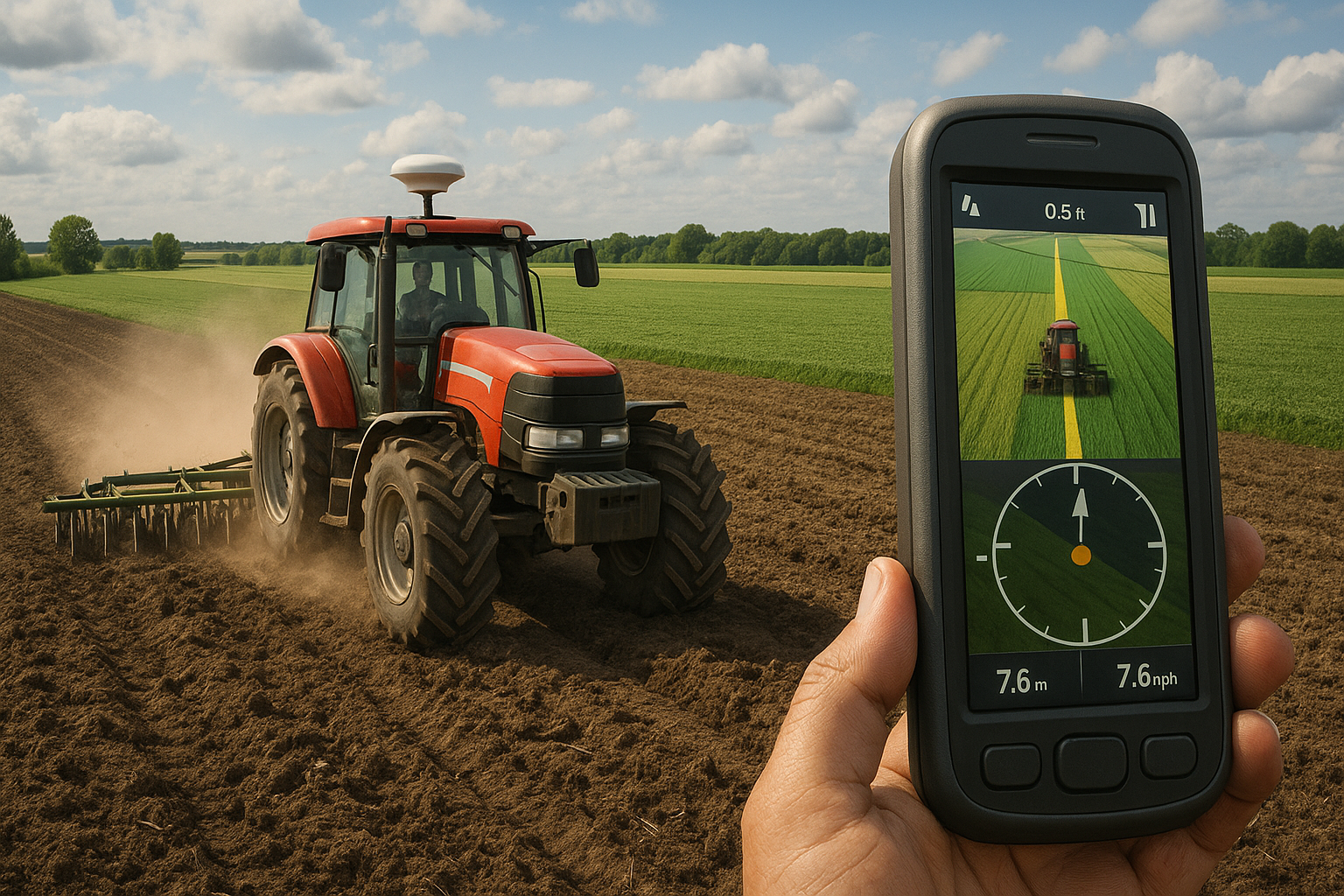Guided Growth: The Role of Navigation Tech in Transforming Modern Agriculture
The paper reviews how advanced navigation technologies, like GNSS, LiDAR, and AI-based vision are transforming agricultural machinery into intelligent, autonomous systems that boost precision and sustainability. It envisions a future of fully automated, data-driven farming powered by integrated sensing, control, and communication technologies.

Research by Liuyan Feng, Changsu Xu, Han Tang, Zhongcai Wei, Xiaodong Guan, Jingcheng Xu, Mingjin Yang, and Yunwu Li presents a detailed exploration of how navigation technology is redefining modern agriculture. Conducted by researchers from the College of Engineering and Technology at Southwest University (Chongqing), Northeast Agricultural University (Harbin), Shandong University of Technology (Zibo), and the Key Laboratory of Modern Agricultural Intelligent Equipment in South China (Guangdong Institute of Modern Agricultural Equipment), the study appears in Artificial Intelligence in Agriculture (2025). It highlights how innovations in positioning, sensing, and control systems are transforming traditional agricultural machinery into intelligent, automated tools capable of precision farming on an unprecedented scale.
From Manual Tools to Smart Machines
The authors trace the evolution of agricultural mechanization from labor-intensive tools to advanced autonomous systems. They argue that navigation technology has become the backbone of this transformation, enabling equipment to move with remarkable accuracy, perform repetitive operations autonomously, and collect spatial data vital for farm management. Originally developed for aerospace and defense applications, navigation systems now anchor precision agriculture, ensuring higher productivity, lower fuel consumption, and reduced environmental impact. The integration of artificial intelligence and automation, they note, marks a major leap toward sustainable and data-driven farming.
Technologies That Power Agricultural Navigation
The review delves into a range of navigation systems reshaping agriculture. Satellite-based systems, such as the Global Navigation Satellite System (GNSS) and its advanced forms, Differential GPS (DGPS) and Real-Time Kinematic (RTK), provide centimeter-level accuracy for tractors, harvesters, and drones. These systems have made straight-line tillage, field mapping, and variable-rate input application possible. Alongside, machine vision navigation uses cameras and computer vision to identify crop rows, boundaries, and obstacles. Deep learning has improved its adaptability, though challenges like lighting and weather remain. Inertial Navigation Systems (INS), using gyroscopes and accelerometers, maintain accuracy in areas where GNSS signals weaken, such as mountainous or canopy-covered zones. LiDAR and laser radar systems further expand the technological landscape, creating 3D field maps for obstacle detection even in darkness. For small and enclosed environments like greenhouses, ultrasonic and infrared sensors provide cost-effective alternatives for collision avoidance and path navigation.
Integration: The Brain Behind Smart Farming
What makes these technologies revolutionary, the authors emphasize, is their integration. Combining data from GNSS, INS, LiDAR, and visual sensors enables machines to interpret complex environments with greater precision and reliability. Advanced control algorithms, ranging from A* and Dijkstra for path planning to fuzzy logic and model predictive control for steering, allow machinery to autonomously plan and follow optimal routes across uneven terrain. The study describes intelligent control systems that convert navigation data into real-time actions, such as adjusting steering angles, managing implement depth, and synchronizing fleet movements. The result is a new generation of agricultural machinery capable of operating continuously, accurately, and autonomously with minimal human supervision.
Transforming Every Stage of Cultivation
The review highlights that navigation technology now underpins virtually all agricultural processes. Automated tractors guided by RTK-GNSS ensure precision during land preparation, while smart seeders guarantee uniform seed spacing. Drones equipped with multispectral cameras perform crop monitoring and targeted spraying, conserving pesticides and water. Harvesters guided by machine vision follow crop rows with high accuracy, reducing grain loss. Inside greenhouses, compact robots employ LiDAR navigation for pruning, sampling, and crop inspection. Together, these applications have given rise to smart farming ecosystems, where interconnected machines exchange data and execute coordinated operations, driving agriculture toward full automation.
Yet, challenges persist. The authors note that GNSS systems are vulnerable to interference from weather or obstacles, and the cost of high-end RTK or LiDAR setups remains prohibitive for smallholders. Visual systems struggle with dust and fluctuating light, while integrating data from multiple sensors demands significant computational power. Another pressing issue is the absence of universal standards for interoperability; different systems and manufacturers often fail to communicate seamlessly. Moreover, reliance on imported software and components threatens the technological independence of developing nations, highlighting the need for localized innovation.
Toward the Future of Autonomous Agriculture
Looking ahead, the authors paint an exciting picture of how navigation technology will continue to evolve. Artificial intelligence is already enhancing perception and decision-making, allowing machines to distinguish between crops, weeds, and terrain features with minimal training. The combination of 5G networks and edge computing enables real-time coordination among fleets of autonomous tractors and drones. Meanwhile, digital twin technology allows engineers to simulate machinery operations before deployment, and swarm robotics envisions coordinated fleets of smaller, cooperative robots replacing large-scale tractors. These innovations, the paper argues, will define the next generation of agriculture: intelligent, adaptive, and self-learning.
The authors conclude that navigation technology represents the digital compass of modern agriculture, guiding the sector from mechanization to full autonomy. However, to achieve this transformation sustainably, continuous research, policy support, and farmer training are essential. They call for advancements in affordable sensors, efficient data fusion algorithms, and international standards to ensure equitable access. The future of farming, they write, will depend not only on machines that move intelligently but on systems that think, learn, and collaborate. In this vision, navigation technology becomes the foundation for a farming revolution, one that promises greater precision, sustainability, and resilience in feeding the world.
- FIRST PUBLISHED IN:
- Devdiscourse










